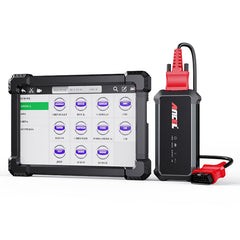Fuel economy is a major concern for many drivers. With rising gas prices and growing environmental awareness, understanding and improving your vehicle’s MPG is more important than ever. But can an OBD2 scanner really help you track and improve your fuel efficiency? The answer is a resounding yes. This article will explore how OBD2 data can provide insights into fuel consumption and what parameters to monitor for better gas mileage.
How OBD2 Data Relates to Fuel Economy
Your car’s On-Board Diagnostics II (OBD2) system is a treasure trove of information about your engine’s performance. While it doesn’t directly display your MPG, it provides data points that directly influence fuel consumption. By accessing this data with an OBD2 scanner, you can gain valuable insights into your vehicle’s efficiency.
Key OBD2 Parameters for Fuel Economy Monitoring
Several crucial parameters accessible through an OBD2 scanner can help you understand and improve your fuel economy:
1. Fuel Trim (Short Term and Long Term)
Fuel trim readings indicate how much the engine’s computer is adjusting the fuel mixture. Positive fuel trim values mean the engine is adding fuel, while negative values indicate it’s reducing fuel. Consistently high positive fuel trim could suggest issues like a vacuum leak, faulty oxygen sensor, or dirty air filter, all of which negatively impact fuel economy.
2. Engine Load
Engine load reflects how hard your engine is working. High engine load under normal driving conditions may indicate a mechanical problem or inefficient driving habits, leading to increased fuel consumption.
3. Mass Air Flow (MAF) Sensor Readings
The MAF sensor measures the amount of air entering the engine. Incorrect MAF readings can disrupt the air-fuel mixture, leading to poor fuel economy. A faulty MAF sensor often triggers a check engine light.
4. Oxygen Sensor (O2) Readings
O2 sensors monitor the oxygen content in the exhaust gases. This data helps the engine computer adjust the air-fuel ratio for optimal combustion and fuel efficiency. Malfunctioning O2 sensors can significantly reduce MPG.
5. Coolant Temperature
An engine operating outside its optimal temperature range can burn more fuel. Monitoring the coolant temperature through your OBD2 scanner can alert you to potential cooling system issues that affect fuel efficiency.
Using OBD2 Data to Improve Fuel Economy
By monitoring these parameters with an OBD2 scanner, you can identify potential problems affecting your fuel efficiency. For instance:
- Consistently high positive fuel trim: Investigate potential vacuum leaks, faulty O2 sensors, or a clogged air filter.
- High engine load during normal driving: Consider adjusting driving habits to reduce strain on the engine.
- Erratic MAF or O2 sensor readings: These often indicate a need for sensor replacement.
- Fluctuating coolant temperature: Have your cooling system inspected for leaks or thermostat issues.
Conclusion
While an OBD2 scanner won’t directly tell you your MPG, it provides crucial data that significantly impacts fuel economy. By understanding and monitoring key parameters like fuel trim, engine load, and sensor readings, you can identify and address issues affecting your vehicle’s efficiency. Using an OBD2 scanner is a powerful tool for maximizing your gas mileage and saving money at the pump.


